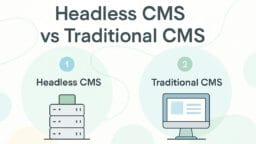Every business, big or small, faces the relentless challenge of attracting high-quality leads that convert into loyal customers. Yet, too often, companies get bogged down by outdated tactics, clunky processes, and misaligned strategies that waste precious time, effort, and budget. That’s where streamlining the lead generation process comes into play – a transformative approach that accelerates demand, nurtures prospects intelligently, and maximizes conversion potential.
This comprehensive guide dives deep into the nuances of lead generation, discussing critical concepts like MQLs (Marketing Qualified Leads) versus SQLs (Sales Qualified Leads), revealing why lead generation remains the biggest bottleneck for many companies, and sharing data-driven insights that illuminate the path to success. From traditional techniques to innovative, automated funnels, readers will learn actionable practices to cultivate more and better leads.
Ready to improve your lead generation game? Let’s embark on a detailed journey to understand how to streamline this vital process for maximum business impact.
What are MQL and SQL Leads? Understanding the Buyer Journey Essentials

Navigating the complex world of lead generation requires clarity about the different types of leads and their significance:
- Marketing Qualified Leads (MQLs): These are prospects who have engaged with your marketing efforts – downloading a whitepaper, attending a webinar, or subscribing to your newsletter – but they are not yet ready to buy. MQLs show potential interest and qualify for nurturing, but need more engagement before advancing towards a purchase.
- Sales Qualified Leads (SQLs): These leads have demonstrated clear intent and readiness to buy. They have been vetted and qualified by sales or marketing teams based on criteria like budget, timeline, and need. SQLs are prime candidates for direct sales conversations.
The distinction profoundly impacts how companies nurture leads. Sending early-stage MQLs directly to sales prematurely can waste resources and annoy prospects, while tightly calibrated nurturing increases conversion rates. Modern lead generation revolves around carefully moving prospects from MQL to SQL using tailored content, scoring algorithms, and automation.
Why Lead Generation is the Biggest Challenge for Companies?
Generating leads is more than just attracting website visitors – it’s about capturing interest that turns into actionable business opportunities. Yet, despite tools and budgets allocated, lead generation remains a persistent hurdle for many companies because of:
- Difficulty Identifying and Targeting Ideal Audiences: Many companies struggle to pinpoint who will truly benefit from their offerings, leading to wasted outreach.
- Resource Constraints: Limited budgets and personnel hamper scalable lead acquisition efforts.
- Inefficient Processes and Poor Lead Quality: Generating volume without quality leads to low ROI and frustrated sales teams.
- Competition and Market Saturation: The noise in digital channels makes cutting through the clutter challenging.
- Complex Customer Decision Journeys: Buyers now research extensively, expecting personalized, informative engagement before purchasing.
Statistics underline the gravity of this issue – over 50% of marketing & sales professionals struggle with lead generation, and generating high-quality leads is cited as the top marketing challenge by nearly half of marketers.
Key Stats Related to Lead and Business Generation
Understanding lead generation’s landscape comes alive through data. Some compelling statistics for 2025 include:
- 50% of marketers say lead generation is their top priority in marketing campaigns.
- Businesses generate 1,877 leads per month on average, with significant variation by industry.
- The mean cost per lead is approximately $198, emphasizing the need for efficiency.
- About 97% of people ignore cold calls, underscoring the decline of traditional outreach.
- 76% of marketers use content marketing to generate leads, proving content’s power.
- Social media contributes to lead generation for 68% of marketers.
- Around 44% of sales reps cite lack of time as a barrier to following up on leads, pointing to the need for automation.
These facts show that while lead generation is top-of-mind, it requires continuous innovation to remain effective.

What Stops Companies from Effective Lead Generation?
Companies often face common barriers that hamper lead generation results, including:
- Poor Website Structure: A confusing, slow, or non-responsive website repels visitors and undermines lead capture efforts.
- Privacy Issues: Increasing data regulations and privacy concerns create friction and distrust, with users reluctant to share information.
- Clumsy or Incorrect Lead Generation Forms: Lengthy or complicated forms reduce conversion rates; users abandon halfway.
- Lack of Trust-Building Factors: Absence of clear brand credibility elements like security badges, certifications, or customer testimonials.
- Insufficient Web Visibility: Weak SEO and content marketing efforts reduce organic traffic, shrinking the lead pool.
- No Work History or Case Studies: Without proven results, leads hesitate to engage.
- Lack of Social Proof: Missing reviews, recommendations, and customer referrals signals a lack of credibility.
Addressing these pain points is critical for building a robust lead generation engine that consistently attracts and converts potential customers.
Traditional Ways to Generate Leads: What Still Works?
The cornerstone lead generation tactics that have stood the test of time include:
- Cold Calling and Telemarketing: Direct outreach remains an option for certain B2B industries despite declining effectiveness.
- Email Marketing: Permission-based campaigns nurture prospects, build relationships, and create demand.
- Trade Shows and Events: Face-to-face connections allow personal engagement and trust building.
- Networking and Referrals: Leveraging professional networks to generate warm introductions.
- Content Offers: Whitepapers, ebooks, and case studies exchange value for contact information.
While effective in context, these methods are often manual, time-consuming, and less scalable without technology support.
Smart Ways to Generate Leads
To stay ahead, companies must integrate modern tactics driven by AI, data, and personalization:
- AI-Powered Chatbots: Engage website visitors 24/7, vet prospects, and hand off qualified leads automatically to sales.
- Content Marketing with Precision Targeting: Publish interactive, value-packed content crafted to individual buyer personas.
- Multi-Channel Campaigns: Combine email, social media, retargeting, and paid ads to capture leads across platforms.
- SEO and Voice Search Optimization: Enhance website visibility for targeted queries in emerging search behaviors.
- Referral and Influencer Programs: Cultivate brand advocates to generate high-quality leads through trust networks.
- Automated Lead Nurturing: Use marketing automation workflows to deliver tailored messaging and accelerate MQL to SQL conversion.
These smart approaches allow businesses to attract better fits, reduce waste, and scale efforts efficiently.

Best Practices to Generate More Leads
Optimizing lead generation entails consistent application of proven best practices:
- Define and Understand Your Target Audience: Create buyer personas and tailor messaging precisely.
- Optimize Landing Pages: Clear, concise, mobile-friendly, and designed to convert visitors with strong CTAs.
- Simplify Lead Capture Forms: Minimize fields, use progressive profiling, and ensure privacy transparency.
- Leverage Social Proof: Showcase testimonials, reviews, awards, and case studies.
- Invest in Quality Content: Educate, inspire, and build trust through blogs, videos, and webinars.
- Engage with Personalized Follow-Ups: Use email sequences and retargeting to nurture leads through the funnel.
- Analyze and Refine Continuously: Use analytics to track conversion points and improve weak spots.
These practices mitigate friction points and create a seamless journey from visitor to customer.
How Automated Lead Generation Funnels Work
Automated lead generation funnels are structured workflows combining marketing and sales efforts powered by technology to capture, nurture, and convert leads systematically.
Typical funnel stages include:
- Attraction: Draw potential leads via content marketing, social ads, SEO, and referrals.
- Capture: Convert visitors to leads with optimized landing pages, chatbot engagement, and forms.
- Nurture: Deliver automated, personalized communications to educate and build interest.
- Qualification: Score leads based on behavior and demographics to identify readiness.
- Conversion: Hand off Sales Qualified Leads (SQLs) to the sales team for follow-up and closure.
Automation reduces manual effort, accelerates lead response times, ensures consistent messaging, and improves funnel transparency. Companies like Shopify and HubSpot have pioneered these automated funnels to boost trial conversions and lead nurturing success.
Case Study: Growth in Lead Generation Using Automated Funnel
One compelling example comes from a SaaS company that implemented an automated lead generation funnel combining personalized landing pages, behavior-based email automation, and AI-driven lead scoring. Within six months, they saw:
- A 150% increase in lead volume.
- Conversion rate lifted from lead to customer by over 35%.
- Sales team efficiency improved as only high-intent leads were prioritized.
- Overall pipeline revenue grew by 48%.
This success was largely attributed to the careful integration of smart content, automation workflows, and continuous data analysis to optimize each funnel stage, proving the power of streamlining lead generation.
FAQs

1. What is the difference between MQL and SQL?
MQLs are leads showing initial interest and require nurturing, while SQLs are vetted leads ready for direct sales outreach due to demonstrated buying intent.
2. Why is lead generation so challenging for companies?
Challenges stem from targeting difficulties, budget constraints, outdated methods, and complex customer journeys needing personalized, relevant engagement.
3. How can automation improve lead generation?
Automation streamlines repetitive tasks, nurtures leads with tailored sequences, scores leads for sales readiness, and ensures faster response times, increasing efficiency and conversions.
4. What are the best practices for increasing lead conversion?
Defining audience, optimizing landing pages, simplifying forms, using social proof, producing quality content, and continuously analyzing results are key.
5. What role does content marketing play in lead generation?
Content marketing educates and engages prospects, nurtures them through the funnel, and builds trust – critical for converting MQLs to SQLs.
6. Are traditional lead generation methods still relevant?
Yes, but they are most effective when combined with modern tools and data-driven strategies to improve targeting and scalability.
Conclusion

Lead generation remains the lifeblood of business growth, but only for those willing to evolve and implement smart strategies. By understanding the critical differences between MQLs and SQLs, recognizing barriers, and embracing automation and data-driven practices, companies can transform their pipeline from unpredictable to potent.
Traditional methods still offer value but must be augmented with AI, content personalization, multi-channel outreach, and automated nurturing.
Businesses that streamline their lead generation process not only generate more leads but create a scalable engine of qualified sales opportunities poised for conversion – and ultimately, sustainable success.






